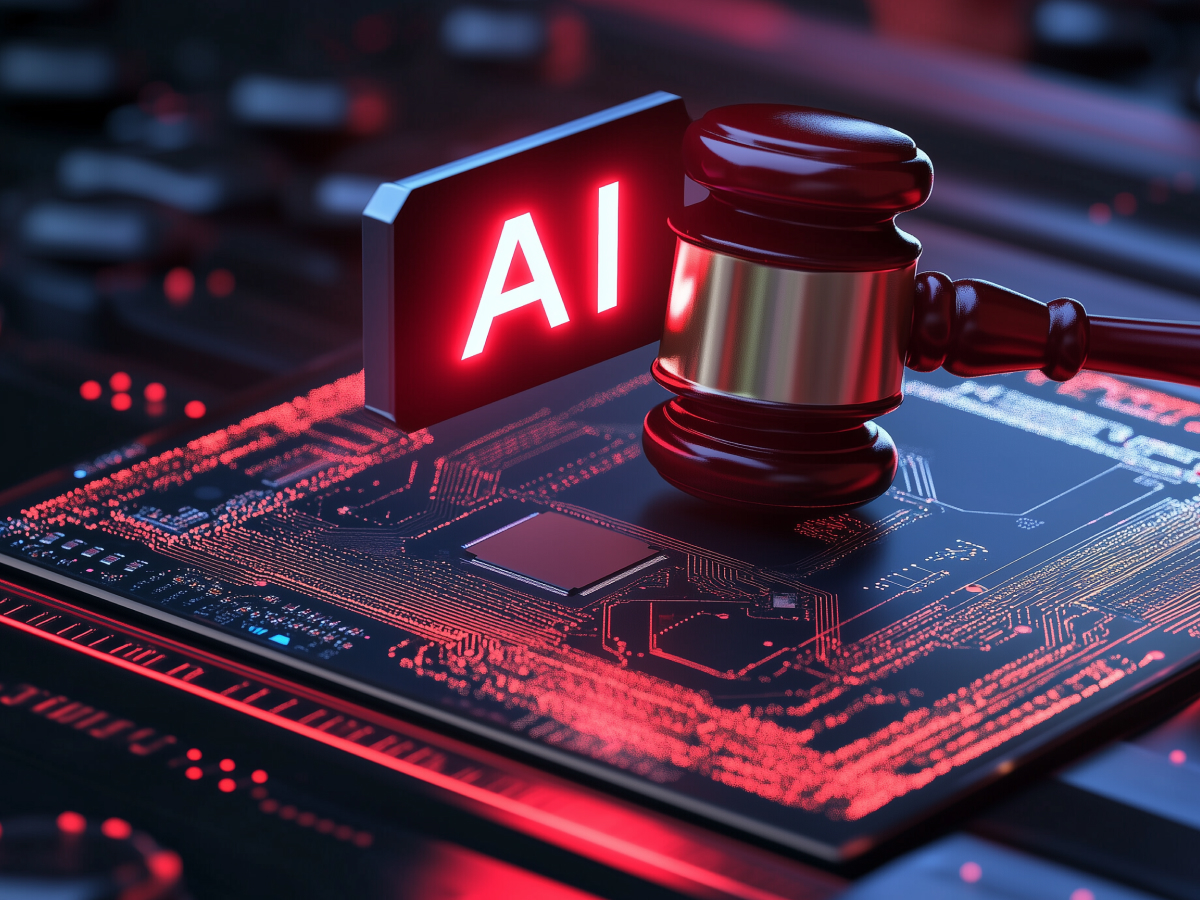AI compliance frameworks will present organizational challenges by 2025
AI regulation is about to become a lot more complicated. Right now, the regulatory environment is fragmented, what works in one region doesn’t necessarily fly in another. The EU AI Act, for example, is setting the bar for how AI should be used in Europe, with a focus on transparency, accountability, and fairness. That’s good in theory, but in practice, it means businesses will need to be laser-focused on staying compliant. It’s a big lift.
In the U.S., the situation is even more complex. There’s no single federal framework like the EU’s; instead, we’re seeing a mix of state-level regulations popping up. Take Colorado, for example, with its Artificial Intelligence Act. It’s one of 15 U.S. states that have already passed AI-related laws, and there are more on the way. The problem for you, the executive, is that each of these states has its own approach, and keeping track of all these rules will demand serious effort.
We’re entering a phase where AI compliance isn’t just about understanding broad principles anymore. It’s about navigating a patchwork of national and state-level laws, each with its own quirks. If you don’t get ahead of this, it could cost you big time in legal fees, fines, or even lost opportunities.
Companies will face new third-party risks
More and more, companies are looking outside for AI solutions. Think of tools like ChatGPT, Copilot, Grammarly, and even AI integrations within platforms like Canva or LinkedIn. These third-party services are becoming staples for many organizations, but with convenience comes risk. As you integrate these services, you’re introducing potential vulnerabilities, often ones that you can’t fully control.
In the past, businesses might have been more focused on managing the risks tied to their own AI systems, but now the real conversation is shifting to third-party risks. If you’re relying on external providers, you need to make sure their systems align with your security standards. There are going to be a lot of questions here: Who owns the data? How do you guarantee privacy? What happens if there’s a breach?
A lot of companies are going to choose to buy AI systems rather than build them, and that’s smart. But managing those third-party relationships is going to get a lot more complicated. You’ll need a solid system for vetting vendors, and you’ll also need to monitor them constantly to ensure they’re meeting your standards, even if they’re not directly under your control.
AI models will require safeguards against emerging threats
AI is powerful, but it’s also vulnerable. As AI systems become more integrated into business operations, the risk of attacks, whether through prompt injections, model hallucinations, or biases, becomes more significant. Think of it like this: AI models are learning machines, and when they learn from flawed data or are fed malicious inputs, they can spit out problematic results. This could have huge consequences, especially if you’re relying on AI for anything mission-critical, like customer data analysis, automated decision-making, or cybersecurity.
The industry has started to develop new frameworks to address these threats, and there’s been a significant effort to reduce the impact of prompt injections and other vulnerabilities. However, for all the buzz around these solutions, the reality is that very few AI models have actually been compromised in major public incidents. That’s good news, but it also means there’s a lot of reliance on AI providers to fix the security gaps in their systems.
It’s not enough to assume that AI tools are secure just because no major breaches have been reported. As AI usage expands, expect to see more sophisticated attacks. It’s essential to stay ahead of these threats and make sure your AI models have the right safeguards in place to mitigate risks.
Data security for AI will gain increasing attention
Data security has been a problem in the tech world for years, but it’s about to take center stage in AI. Why? Because AI is only as good as the data it processes, and as companies use more AI to handle sensitive customer information, protecting that data becomes paramount. Unfortunately, a lot of current methods for securing data, things like regular expressions (basic pattern matching for text) or manual data labeling, aren’t really up to the task anymore.
For years, data security has been somewhat neglected. But with the rise of Generative AI (GenAI), AI systems that generate content like text, images, or videos, the need for better security practices is undeniable. You can’t rely on old-school solutions when you’re dealing with systems that process massive volumes of sensitive data. There’s already been some investment in improving data security for AI, and you’ll see this area get more attention in the coming months.
Data breaches and privacy violations can’t be ignored, and the consequences for companies are only going to grow. You’ll need to be proactive about making sure your data protection measures evolve in line with the rapid growth of AI technology. The silver lining? The market for AI security solutions is booming, so there are a lot of new tools coming to help you secure your data more effectively.
AI will become a mainstream tool for security operations
AI isn’t just changing the way businesses operate, it’s going to change how security works. As AI matures, its role in cybersecurity will evolve from “experimental” to “essential.” Right now, there’s a lot of testing and tinkering, but in the near future, we’re going to see AI integrated into security programs at a much deeper level. It’s already happening, with projects like Google’s Project Mariner, which aims to bring AI-powered security tools directly into enterprise systems at the browser level.
The potential for AI in security is huge. It could help you detect threats in real-time, predict potential breaches before they happen, and even automate responses to security incidents. The goal isn’t just to use AI for monitoring or analysis; it’s about embedding it into the very fabric of your security operations. If done right, AI can make your security systems faster, smarter, and more effective, cutting down on response times, reducing human error, and potentially saving millions in avoided breaches.
This isn’t something you’ll want to ignore. The future of cybersecurity is AI, and if you’re not already integrating it into your security protocols, you’ll fall behind. In the next few years, expect AI-driven security to become just as essential as firewalls and antivirus software are today.
Key takeaways
- Prepare for fragmented regulations: In 2025, businesses will face a complex and fragmented regulatory environment for AI, with varying laws across regions like the EU and U.S. Leaders should prioritize understanding and managing the patchwork of compliance requirements to avoid fines and legal complications.
- Proactive compliance strategy is key: With more states and countries developing AI-specific legislation, companies need to implement proactive compliance strategies and dedicated teams to track evolving requirements.
- Manage third-party AI relationships: As more companies purchase AI systems rather than develop them in-house, the risk of third-party vulnerabilities will increase. Executives must ensure comprehensive vendor management frameworks are in place to mitigate external risks related to AI services.
- Vet external AI providers carefully: With widespread AI integration (e.g., through tools like ChatGPT, Grammarly), organizations must be vigilant about the security, data privacy, and compliance practices of their third-party AI providers.
- Invest in AI-specific data security: Current data protection practices are inadequate for the growing complexity of Generative AI. Invest in next-gen data security technologies to safeguard sensitive information and meet compliance standards, ensuring AI systems are secure from breaches.
- Focus on AI-specific threats: As AI models face emerging threats like prompt injections and model hallucinations, companies must work closely with AI providers to fortify systems against these vulnerabilities, preventing potential damage to operations and reputation.
- Integrate AI for better security: AI is transitioning from an experimental tool to a core component of security strategies. Companies should accelerate the integration of AI-driven security solutions to enhance threat detection and response, reducing risks and improving operational efficiency.





